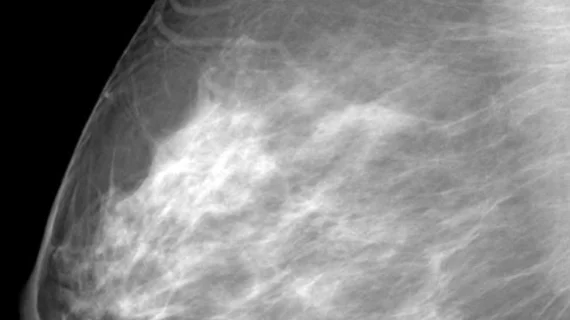Breast cancer risk assessments should account for longitudinal changes in breast density, new data suggest
Longitudinal changes in breast density could be indicative of breast cancer risks and, accordingly, should be considered in risk assessments, authors of a new study published in JAMA Oncology suggested.
Breast density is known to drop over time, but new data suggest that the rate at which density decreases merits special attention, as it could be associated with a woman’s chance of later developing breast cancer. Of the nearly 1,000 subjects included in the analysis, women whose density decreased more slowly were found to be more likely to eventually receive a cancer diagnosis. This, the authors of the study suggested, warrants consideration for inclusion in risk stratification models.
“Volumetric density is an established risk factor for breast cancer and is incorporated into existing risk assessment models, including Tyrer-Cuzick model, version 8. However, to our knowledge, there are limited data on the association between change in density over time and risk of subsequent breast cancer diagnosis,” corresponding author of the new paper Graham A. Colditz, MD, with the Division of Public Health Sciences and the Department of Surgery at Washington University School of Medicine in Missouri, and co-authors explained.
Colditz and colleagues analyzed data from 947 women who routinely underwent breast cancer screening exams over a period of up to 10 years. Among the group, a total of 289 cases of pathology-confirmed breast cancer were included; these cases were studied alongside 658 controls.
The group noted that while breast density decreased over time in both groups of women, those who went on to develop breast cancer recorded significantly slower decreases. Density also was higher on the initial screening exams of women included in the cancer group.
Having such an understanding of a woman’s density trajectory could help better inform risk assessments that do not focus on early detection alone, the authors suggested.
“Much ongoing research focuses on mammography analysis to allow for an earlier diagnosis of breast cancer, when it is the most treatable. The potential to use the data embedded in mammographic images and make full use of longitudinal measures will facilitate optimizing risk stratification to guide more personalized risk reduction,” the group noted.
The entire study can be viewed here.

